Happy Easter. With warm weather forecast we should be enjoying the best of daffodils and no flowers are quite as lovely at Easter. By choosing different varieties you can have daffodils in flower from January to May. I have planted almost 100 kinds in my garden but I can never decide which I like best.
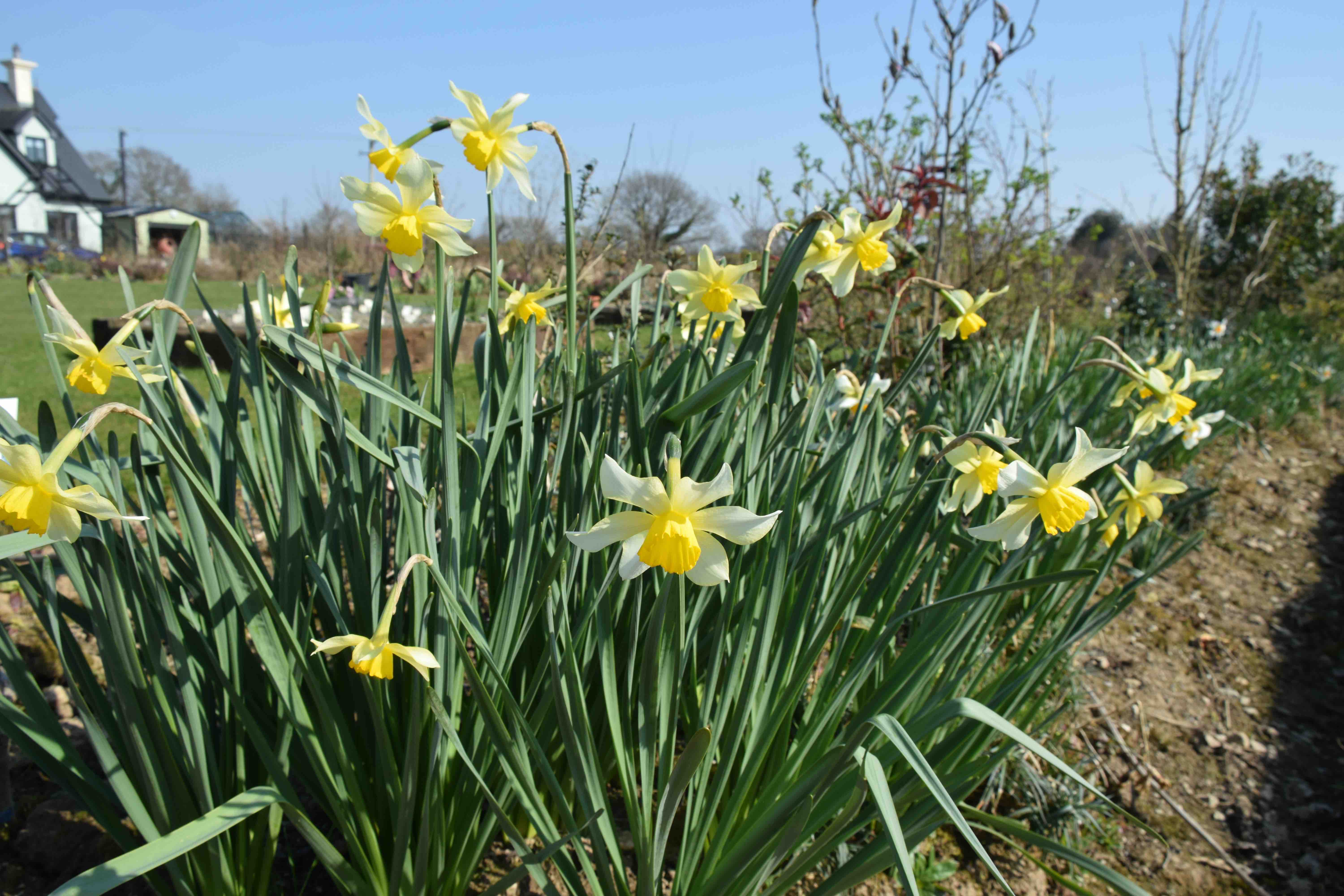
Perhaps it is nostalgia but I am increasingly fond of really old kinds which remind me of when we lived in the derelict vicarage in Lingfield. The woods and fields were scattered with ancient daffodils, the remnants of gardens in the previous century. I am glad to have these links with the past.
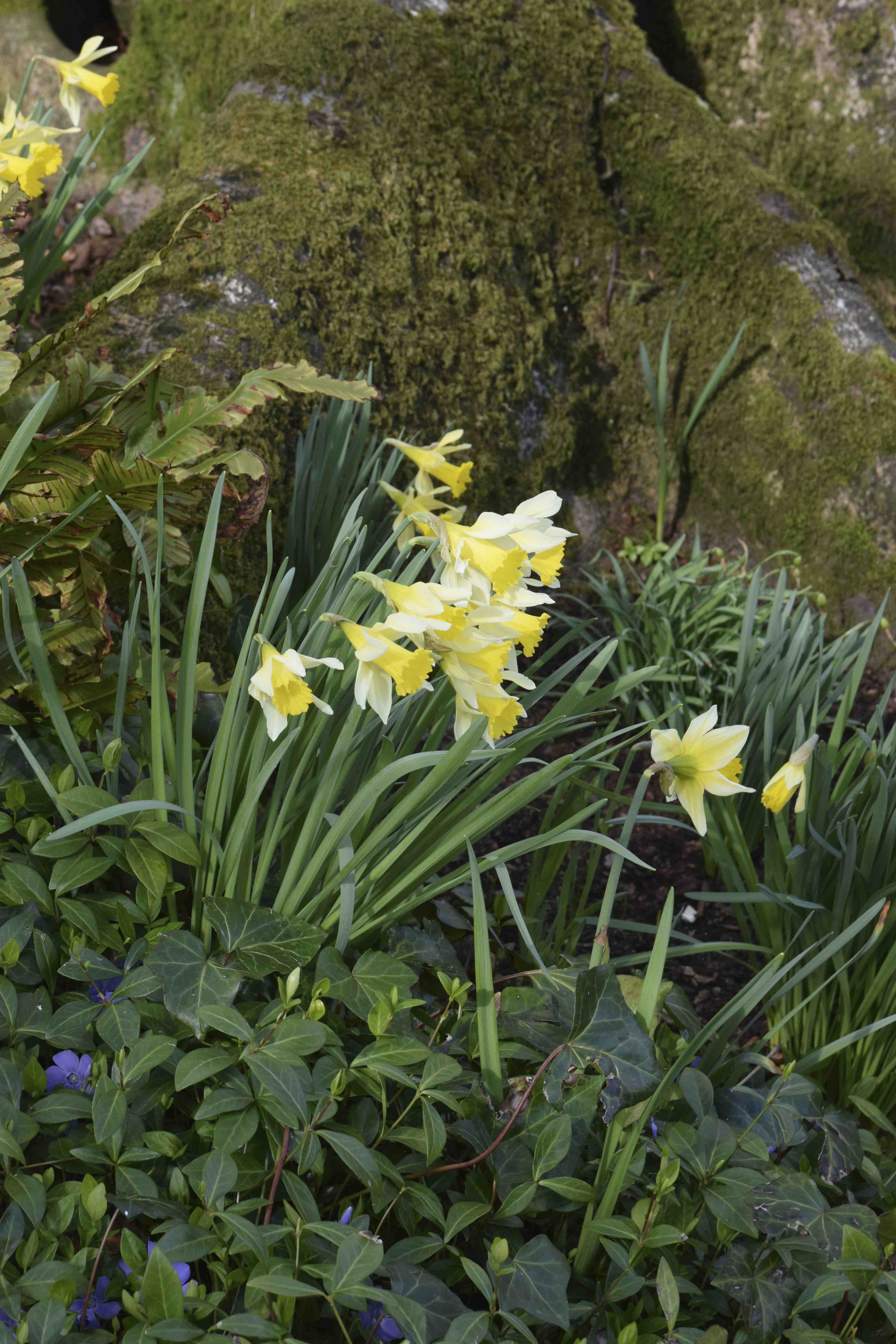
Wordsworth did much to make daffodils a household name and the subject of his poem is the wild daffodil and it is a lovely plant. But it needs a natural setting to show off its charms. Modern, showy varieties would not look anything like as lovely here.
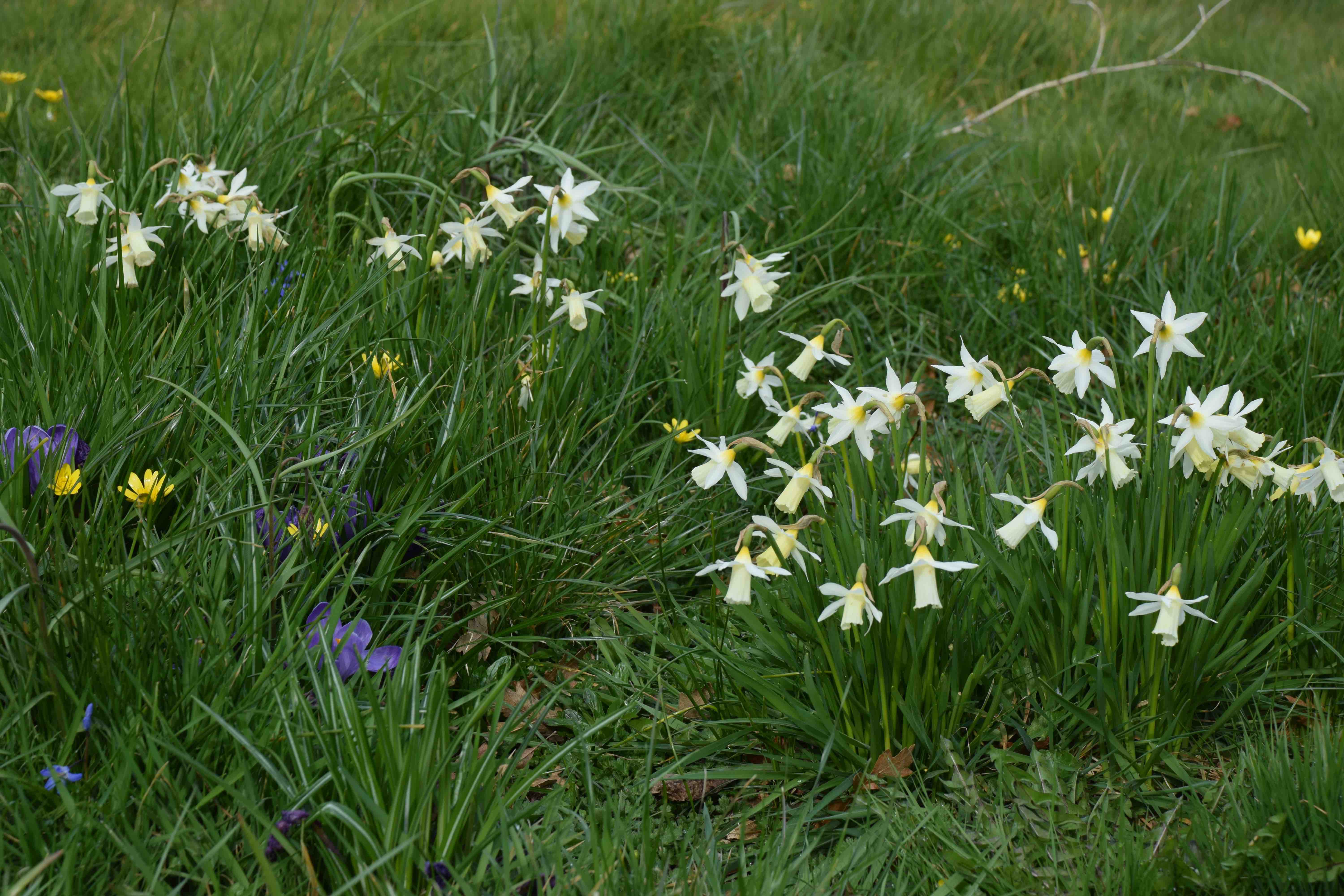
I think that small daffodils look best naturalised in grass. They also tend to bloom early and die back early, so cause least problems with grass cutting. ‘Elka’ is a little gem with pale cream trumpet flowers.
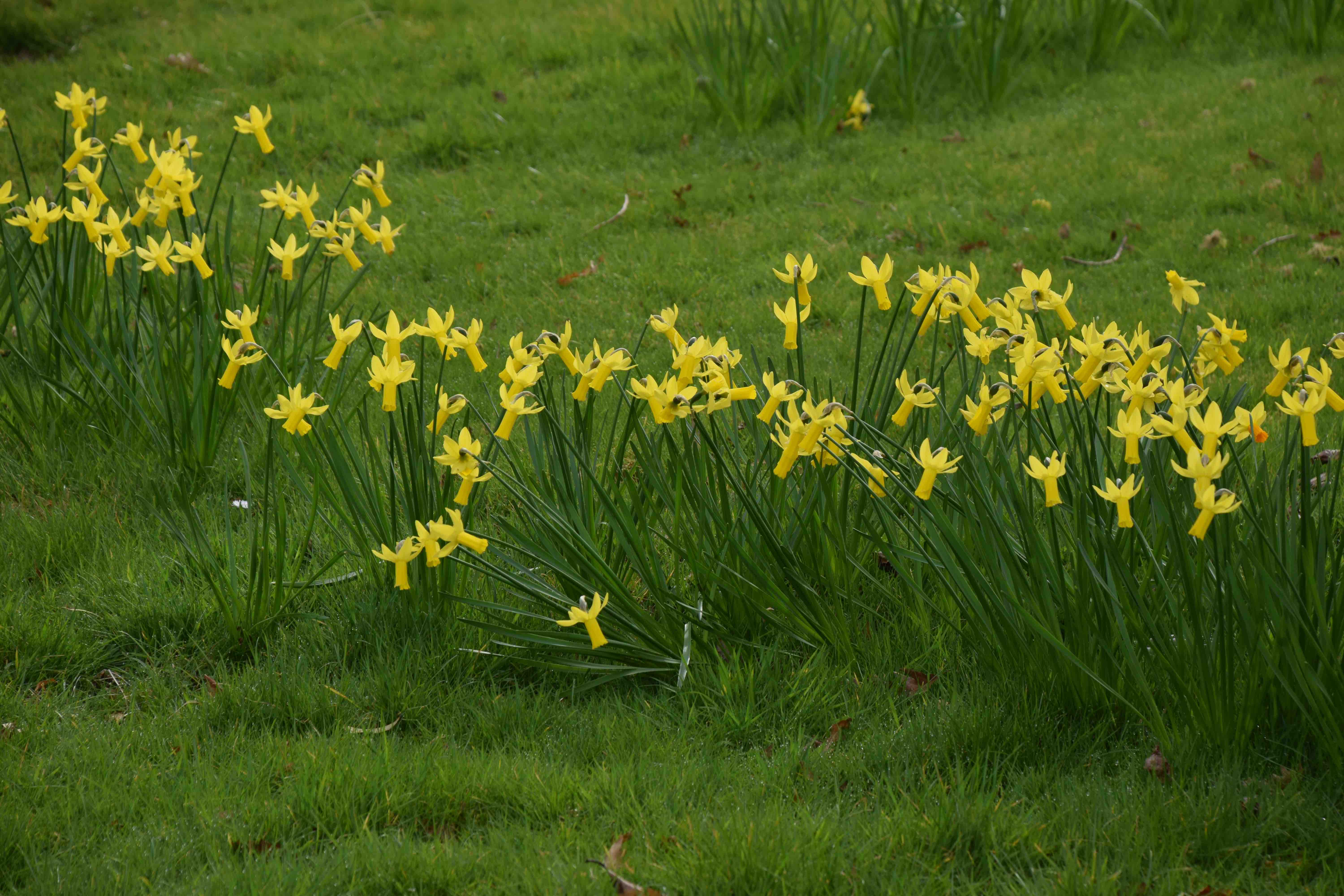
I also prefer to plant one kind or one or two together in drifts rather than a mix which can give a spotty effect.
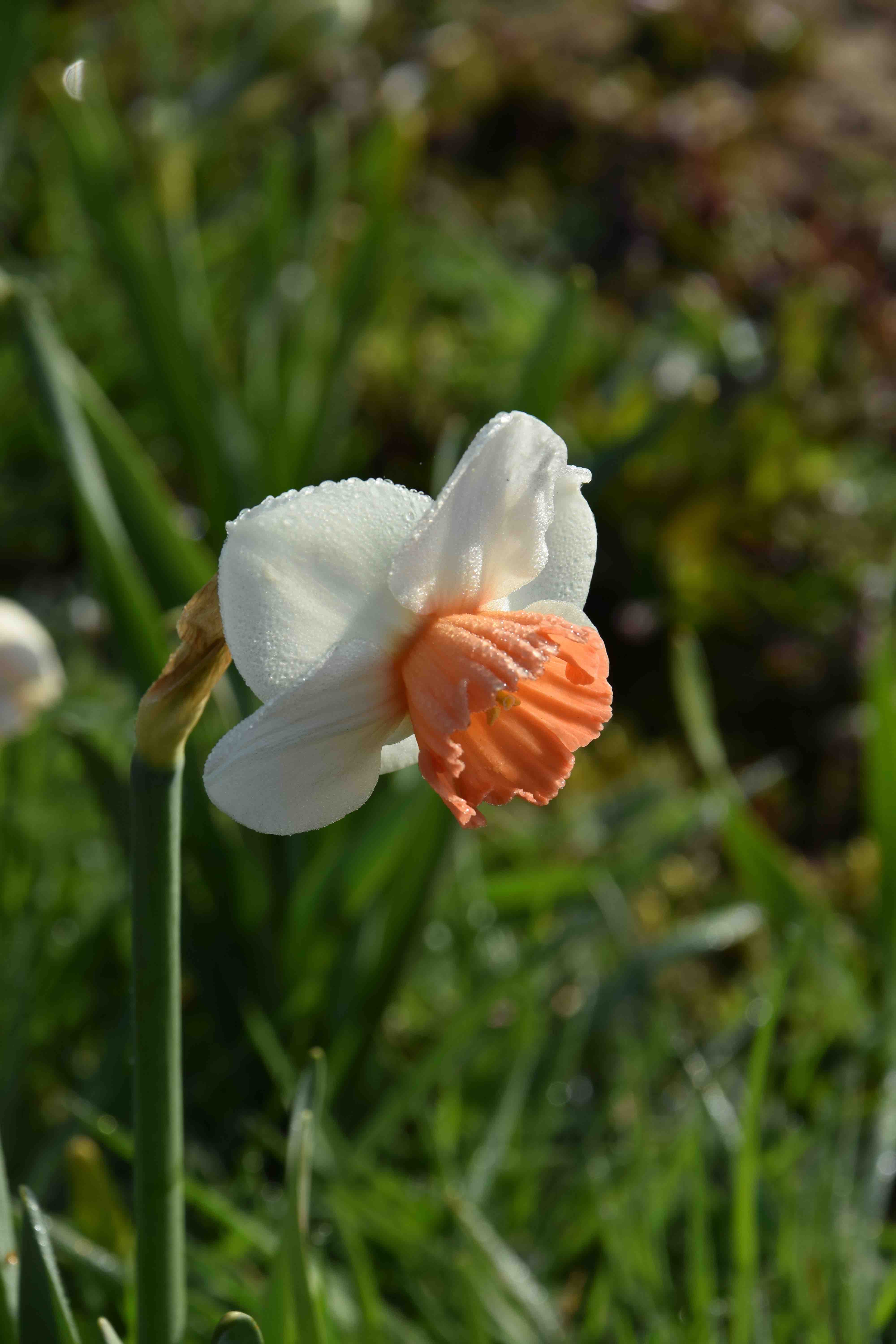
Daffodils are not all yellow. I am a fan of pink daffodils and breeders are getting closer to true pinks. Older kinds opened yellow and aged to pink but ‘Brooke Ager’ is crisp pink and white from the moment she opens.
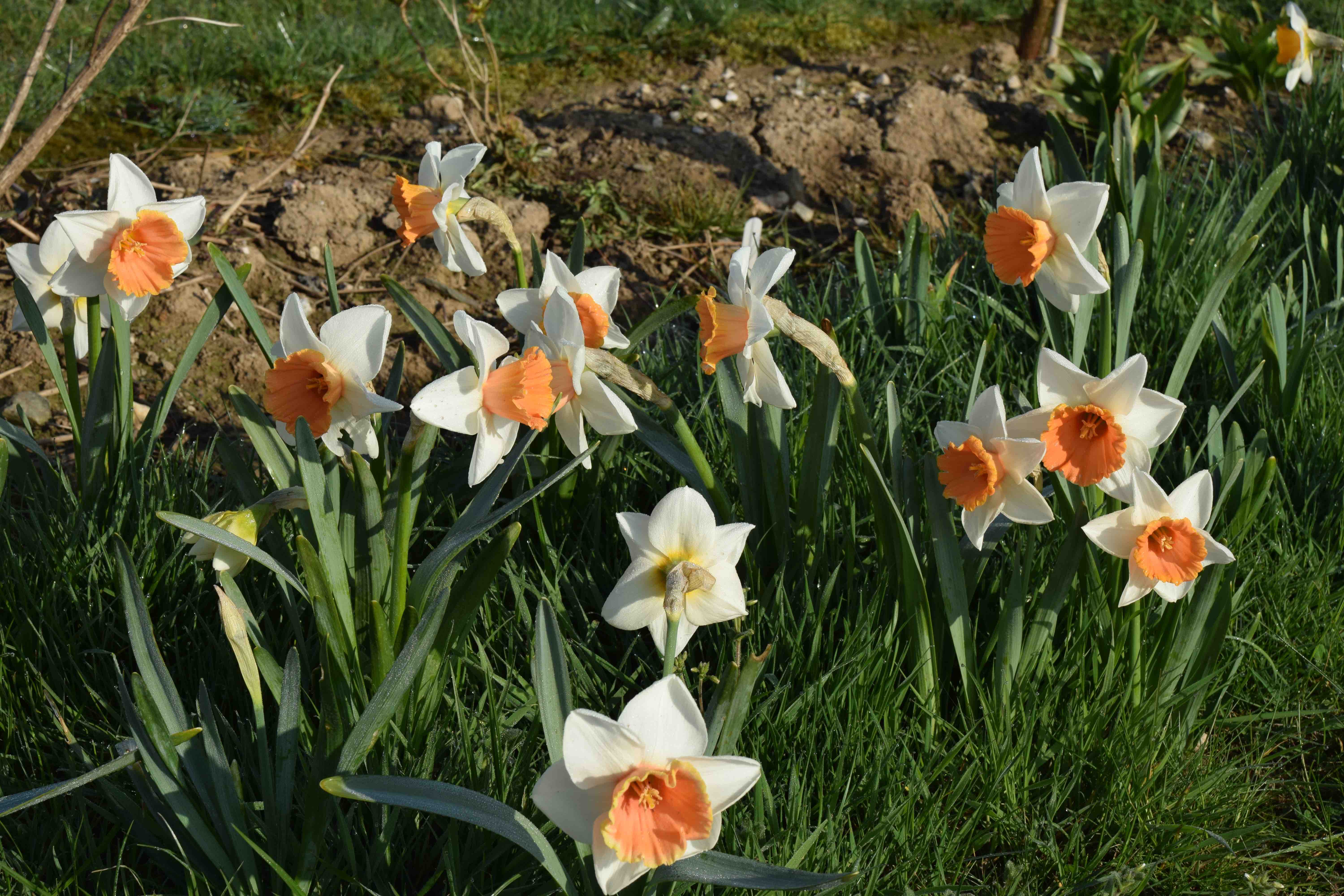
‘Chromacolor’ is almost orange when it opens but ages to a good pink and has large flowers and is vigorous.
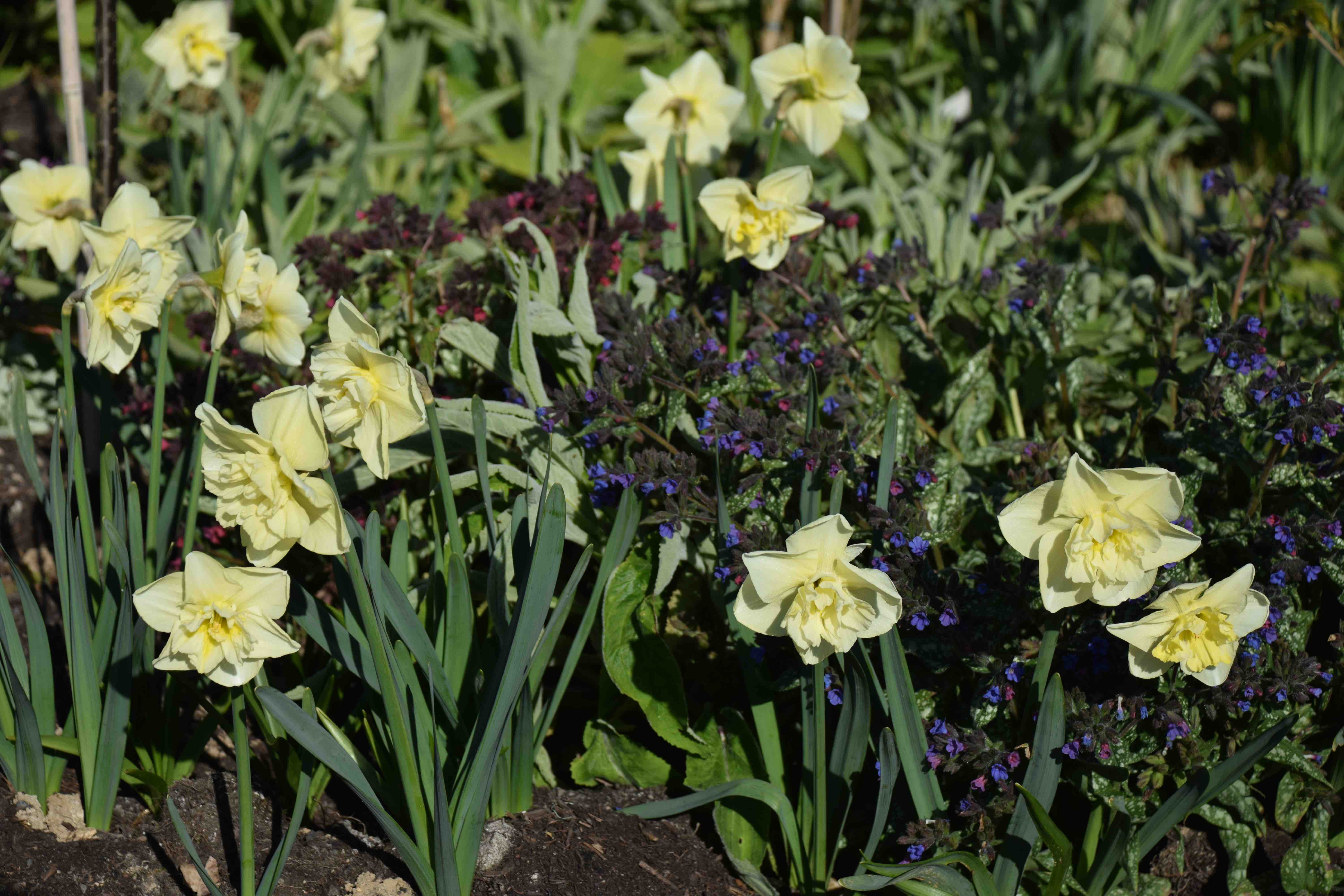
Daffodils can be planted in the border under shrubs or beside and under herbaceous plants like peonies or pulmonarias that will cover up the dying foliage of the daffodils.
Take a few photos of your garden this weekend and make notes of where you need some splashes of daffs next year. Then this autumn you can pop to Knights and stock up so your garden is full of flowers next spring.
What to do next
While your daffodils are growing and in leaf they are making food to build the bulb for next year. It is important that the leaves are allowed to mature and to die down as naturally as possible.
Deadhead the plants, snapping off the old flower and seed pod, if possible, to prevent nutrients being wasted making seeds. Deadheading also tends to make the leaves die back a little quicker.
You must allow the leaves to grow for at least six weeks after the flowers die. Never cut them off earlier or tie them in knots!
Then you can cut off the leaves. If the daffodils are in pots then you should keep watering and feeding until the leaves start to die down (or after six weeks after flowering) and then they can be carefully lifted and dried. Daffodil bulbs dislike long drying out so it is best to replant immediately in the garden if possible. If they have to be stored then a cool shed or garage is fine but protect from mice.
Or you can leave them in the pots for next year. Daffodils in pots under shrubs can be left for many years.